No, dogs do not typically use litter boxes as they usually prefer to eliminate outdoors. Many pet owners wonder if their dogs can use litter boxes, especially during inclement weather or for smaller living spaces.
While dogs do not have the natural instinct to use litter boxes like cats, some owners have successfully trained their dogs to use them. Breeds such as Shih Tzu, Pugs, Maltese, and Pekingese can be more amenable to litter box training, along with puppies.
However, it requires patience, consistency, and positive reinforcement. Nevertheless, it is essential to note that some litter box-trained dogs may continue to have accidents off and on. Therefore, it’s crucial to consider the individual dog’s behavior and preferences before deciding to litter box train.

Credit: m.youtube.com
Unlocking The Secret Potential Of Dogs Using A Litter Box
When it comes to pet care, litter box training for dogs may not be the first thing that comes to mind. However, this unconventional approach can hold the key to unlocking your dog’s hidden potential. Litter box training, often associated with cats, is gaining popularity as a viable option for dog owners, offering a convenient and hygienic solution for indoor waste elimination. In this post, we will explore the feasibility, benefits, and challenges of litter box training for dogs, as well as the breeds that are most suitable for this alternative method.
Feasibility Of Litter Box Training For Dogs
Litter box training for dogs is indeed a feasible option, especially for pet owners living in apartments or homes with limited outdoor space. With proper guidance and consistent training, many dogs, regardless of their breed, can learn to use a litter box effectively.
Breeds Suitable For Litter Box Training
While all dogs have the potential to be litter box trained, certain breeds may adapt more readily to this method. Smaller breeds such as Shih Tzu, Pugs, Maltese, and Pekingese are particularly suitable for litter box training due to their size and compatibility with indoor living environments.
Benefits Of Litter Box Training For Dogs
Litter box training offers various benefits for both dogs and their owners. Not only does it provide a convenient solution for waste elimination indoors, but it can also be particularly advantageous for senior dogs, puppies, and individuals residing in cold or urban environments.
Challenges Of Litter Box Training Dogs
Despite its potential benefits, litter box training for dogs does come with its own set of challenges. Some dogs may require more time and patience to acclimate to the litter box, while others may struggle with issues such as appropriate litter selection and consistent usage.
Training Dogs To Use A Litter Box
When it comes to potty training dogs, most people think of the traditional method of taking them outside. However, training dogs to use a litter box can be a viable alternative, especially for puppies and smaller breeds. It not only offers convenience but also provides a solution for pet owners who live in apartments or have limited access to outdoor spaces. In this section, we will delve into effective training techniques, the importance of patience and consistency, and why positive reinforcement plays a crucial role in successfully teaching dogs to use a litter box.
Effective Training Techniques
Training dogs to use a litter box requires a systematic approach that focuses on reinforcing desired behaviors and discouraging inappropriate elimination. Here are some effective techniques to help you navigate the training process:
- Start by selecting an appropriate litter box. Ensure it is large enough for your dog to comfortably turn around and has high sides to prevent any accidents.
- Place the litter box in a quiet and easily accessible area of your home, away from food and sleep areas.
- Introduce your dog to the litter box gradually. Allow them to explore and sniff it, making it a positive and safe environment.
- Establish a consistent schedule for potty breaks and place your dog in the litter box at regular intervals, especially after meals, playtime, or naps.
- Use verbal cues or commands, such as “go potty” or “use the litter box,” to associate the behavior with the desired action.
- When your dog eliminates in the litter box, reward them with verbal praise, treats, or their favorite toy. Positive reinforcement strengthens the desired behavior and encourages repetition.
- Be patient and avoid punishing accidents outside the litter box. Instead, redirect your dog to the litter box and praise them for using it correctly.
Patience And Consistency
Potty training any dog requires patience and consistency, and teaching them to use a litter box is no different. Dogs are creatures of habit and thrive on routine. By consistently reinforcing the desired behavior, your dog will learn to associate the litter box with the appropriate place to eliminate. Remember to:
- Stick to a regular potty schedule, taking your dog to the litter box at consistent times each day.
- Monitor your dog closely after meals or water intake, as these are common times for bathroom breaks.
- Be patient when accidents happen. Accidents are a part of the learning process, and punishment can create fear or anxiety, hindering progress.
- Consistently reward and praise your dog when they use the litter box correctly. Positive reinforcement helps to reinforce the desired behavior and encourages them to continue using the litter box.
Importance Of Positive Reinforcement
Positive reinforcement is a powerful tool in dog training, and it plays a critical role in training dogs to use a litter box. By rewarding your dog for using the litter box, you create a positive association with the behavior. Here’s why positive reinforcement is important:
- It strengthens the bond between you and your dog, fostering trust and communication.
- It motivates your dog to repeat the desired behavior, as they associate it with rewards and praise.
- It creates a positive and enjoyable training experience for both you and your dog.
- It helps build your dog’s confidence and reduces fear or anxiety around elimination.
By implementing these effective training techniques, practicing patience and consistency, and utilizing positive reinforcement, you can successfully train your dog to use a litter box. Remember, every dog is unique, and the training process may take time. Be patient, provide a safe and comfortable environment, and celebrate small victories along the way. With dedication and consistency, your furry friend will master the litter box in no time!
Understanding Dog Behavior Around Litter Boxes
Training dogs to use litter boxes can be successful for puppies and smaller breeds like Shih Tzu or Pugs. With patience and consistency, litter training can be a fun and effective way to teach dogs good bathroom habits. It’s important to use positive reinforcement to encourage dogs to use the litter box.
When it comes to understanding dog behavior around litter boxes, it’s important to acknowledge that dogs and cats have different instincts and preferences when it comes to elimination. While cats are naturally drawn to using litter boxes due to their territorial nature and desire for a clean environment, dogs may not have the same inclination. However, some dogs can develop an interest in litter boxes, and it’s essential to consider the reasons behind this behavior.
Reasons Why Dogs Might Be Interested In Litter Boxes
It’s crucial to recognize the potential factors that can attract dogs to litter boxes, as this understanding can assist in addressing and managing their behavior. Some reasons for a dog’s interest in litter boxes may include:
- Exploring the unfamiliar scent and texture of cat litter
- Seeking attention or reacting to changes in the household
- Curiosity about the cat’s territory and activities
- Potential health concerns or dietary deficiencies
Exploring The Attraction Of Cat Waste To Dogs
Dogs’ attraction to cat waste can be a perplexing behavior for pet owners. Some potential explanations for this attraction include:
- Sensory appeal: The distinct scent and taste of cat feces may intrigue dogs.
- Natural instinct: Dogs have a scavenging instinct, and cat feces may be perceived as a potential food source.
- Household dynamics: Changes in the home environment or attention-seeking behaviors can lead to dogs showing interest in cat litter boxes.
Safety Concerns When Dogs Use Litter Boxes
Dogs are naturally curious creatures, and it’s not uncommon for them to explore their surroundings using their noses and mouths. This curiosity can lead to one of the main safety concerns when dogs use litter boxes: the risk of consuming cat litter. Cat litter is made from various materials, such as clay, silica gel, or plant-based substances, and it is designed to absorb urine and control odors. However, some types of cat litter, especially clumping varieties, can pose health risks to dogs if ingested.
Here are some potential risks of a dog consuming cat litter:
- Intestinal blockage: Clumping cat litter can expand and harden when it comes into contact with liquid, forming clumps. If a dog ingests these clumps, they can potentially cause an intestinal blockage, leading to discomfort and potential medical emergencies.
- Gastrointestinal irritation: The materials used in cat litter, especially those with fragrances or deodorizers, can irritate a dog’s digestive system if consumed in large quantities. This irritation can lead to symptoms such as vomiting, diarrhea, and discomfort.
Toxicity Concerns And Symptoms
In addition to the risks mentioned above, certain types of cat litter can be toxic to dogs if consumed. It’s crucial to be aware of the symptoms of toxicity and seek veterinary attention if necessary. Here are some potential toxicity concerns and their corresponding symptoms:
| Toxic Substance | Symptoms |
|---|---|
| Clay-based cat litter | Upset stomach, diarrhea, vomiting |
| Silica gel cat litter | Gastrointestinal irritation, potential respiratory distress |
| Plant-based cat litter | Allergic reactions, gastrointestinal upset |
If you suspect your dog has consumed cat litter and is showing any of these symptoms, it’s essential to contact your veterinarian for guidance and possible treatment.
Overall, while litter box training can be a viable option for some dogs, it’s crucial to consider safety concerns. Always choose a cat litter that is safe for dogs and be vigilant in monitoring your pet’s behavior and health when they are using a litter box.
Adapting Litter Boxes For Dogs
Litter box training can work for some dogs, especially puppies or smaller breeds like Shih Tzu and Pugs. Dog owners should consider high-sided trays and separate boxes, as some dogs may enjoy digging in the litter. Be cautious with litter consumption, as it can cause harm if ingested in large amounts.
Dogs using litter boxes might seem unconventional, but with the right training and adjustments, it can be successful. Adapting litter boxes for dogs involves understanding their needs and behaviors to create a suitable environment for them.
Proper Training For Dog Adaptation
Training is essential for a dog to adapt to using a litter box effectively. Consistency is key in reinforcing the behavior, along with positive reinforcement such as treats or praise. Patience is crucial as dogs may take time to adjust to this new concept.
Considerations For Large Dog Breeds
When adapting litter boxes for large breeds, size matters. Larger dogs will require a spacious litter box to comfortably use it. Consider using durable materials that can withstand their weight and size.
High-sided boxes are ideal for male dogs to prevent messes and improve containment. Separate boxes may be needed if you have multiple pets to avoid conflicts or hygiene issues.
In conclusion, adapting litter boxes for dogs requires understanding their unique needs and providing the right environment and training.
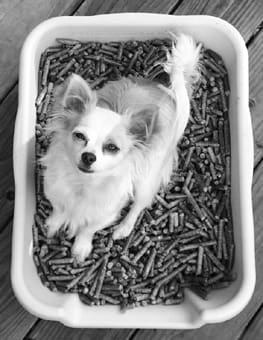
Credit: www.whole-dog-journal.com
Success Stories Of Litter Box Training For Dogs
Litter box training can be a successful option for dogs, especially for smaller breeds and puppies like Shih Tzu, Pugs, Maltese, and Pekingese. With patience, consistency, and positive reinforcement, dogs can be trained to use a litter box easily.
Real Experiences Of Litter Box Training Dogs
Many dog owners have successfully trained their furry friends to use a litter box, and their experiences can provide valuable insights for those considering this training method.
Tips From Experienced Dog Owners
Here are some tips from experienced dog owners who have successfully litter box trained their dogs:
- The key to successful litter box training is patience and consistency. It may take time for your dog to understand and adapt to this new behavior.
- Start by choosing the right litter box for your dog. Opt for one with high sides if you have a male dog or a larger breed.
- Place the litter box in a quiet and easily accessible area of your home. Make sure it is away from your dog’s sleeping and eating areas.
- Introduce your dog to the litter box gradually. Encourage them to explore it by placing treats or toys nearby.
- When your dog uses the litter box correctly, reward them with praise or treats to reinforce the positive behavior.
- Keep the litter box clean by scooping it daily and completely changing the litter regularly. Dogs are more likely to use a clean litter box.
- If accidents happen outside the litter box, avoid scolding or punishing your dog. Instead, clean the area thoroughly and continue with the training process.
- Consider using attractant sprays or adding a small amount of your dog’s urine or feces to the litter box to encourage them to use it.
By following these tips and being patient with your dog, you can increase the chances of successful litter box training. Remember, each dog is unique, so it may require some trial and error to find the right approach for your furry friend.
When Litter Box Training May Not Be Ideal
While litter box training is a suitable choice for some dogs, there are instances when it may not be the most conducive method for toilet training. It’s essential to consider the limitations of litter box training for dogs and explore alternative solutions to ensure effective and appropriate toilet training for your furry companions.
Limitations Of Litter Box Training For Dogs
- Dogs with large breeds or mobility issues may struggle with using a litter box effectively.
- Some dogs may have a natural tendency to dig, leading to a messy litter box area.
- Maintaining cleanliness and managing odors can be challenging, especially in multi-pet households.
- Male dogs may require a litter box with higher sides to prevent splashing and mess.
Alternative Solutions For Dog Toilet Training
Considering the limitations of litter box training, there are alternative approaches to effectively toilet train your dog. These may include:
- Regular outdoor walks and potty breaks to facilitate natural elimination.
- Utilizing specific indoor potty training systems designed for dogs, such as artificial grass pads or dog litter products.
- Positive reinforcement and consistent training to encourage appropriate toilet behavior in designated areas.
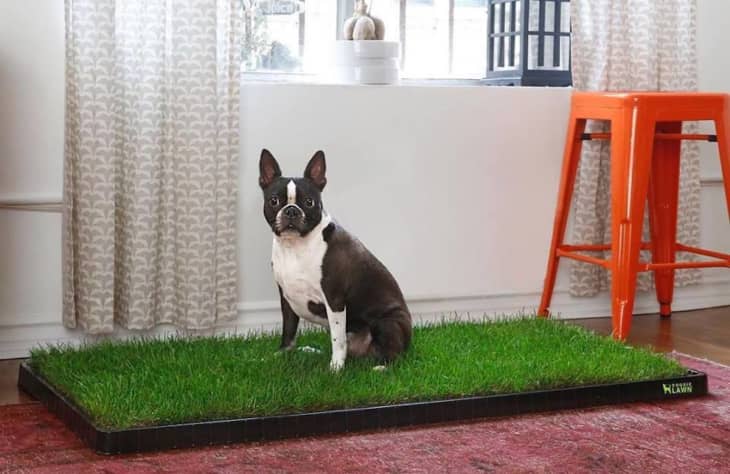
Credit: www.apartmenttherapy.com
Final Thoughts On Dog Litter Box Training
Training your dog to use a litter box can be a convenient solution, especially for smaller breeds. However, it’s essential to consider the pros and cons of this method and respect your dog’s preferences to ensure successful training.
Balancing Pros And Cons Of Litter Box Training
- Pros: Ideal for apartment living or owners with limited outdoor space.
- Cons: Some dogs may find it challenging to transition from outdoors to a litter box.
Considering Individual Dog Preferences
- Preference: Some dogs may prefer using a litter box due to convenience.
- Comfort: Ensure the litter box is comfortable and accessible for your dog.
Frequently Asked Questions
What Breed Of Dog Uses A Litter Box?
Some breeds like Shih Tzu, Pugs, Maltese, and Pekingese can be trained to use a litter box.
Can I Train My Dog To Poop In The Litter Box?
You can train your dog to poop in the litter box with patience, consistency, and positive reinforcement.
Why Do Dogs Like Litter Boxes?
Dogs are attracted to litter boxes because the scent and taste of cat waste may appeal to them.
Is It Safe To Use Cat Litter On Dogs?
It is not safe to use cat litter on dogs due to potential ingestion risks. While not toxic, it can cause irritation and inflammation if consumed.
Conclusion
Training a dog to use a litter box can be successful with patience, consistency, and positive reinforcement. While it may not come as naturally to dogs as it does to cats, some breeds, like Pugs and Shih Tzus, may adapt well to litter box training.
It’s not impossible, but it’s important to be prepared for potential challenges.


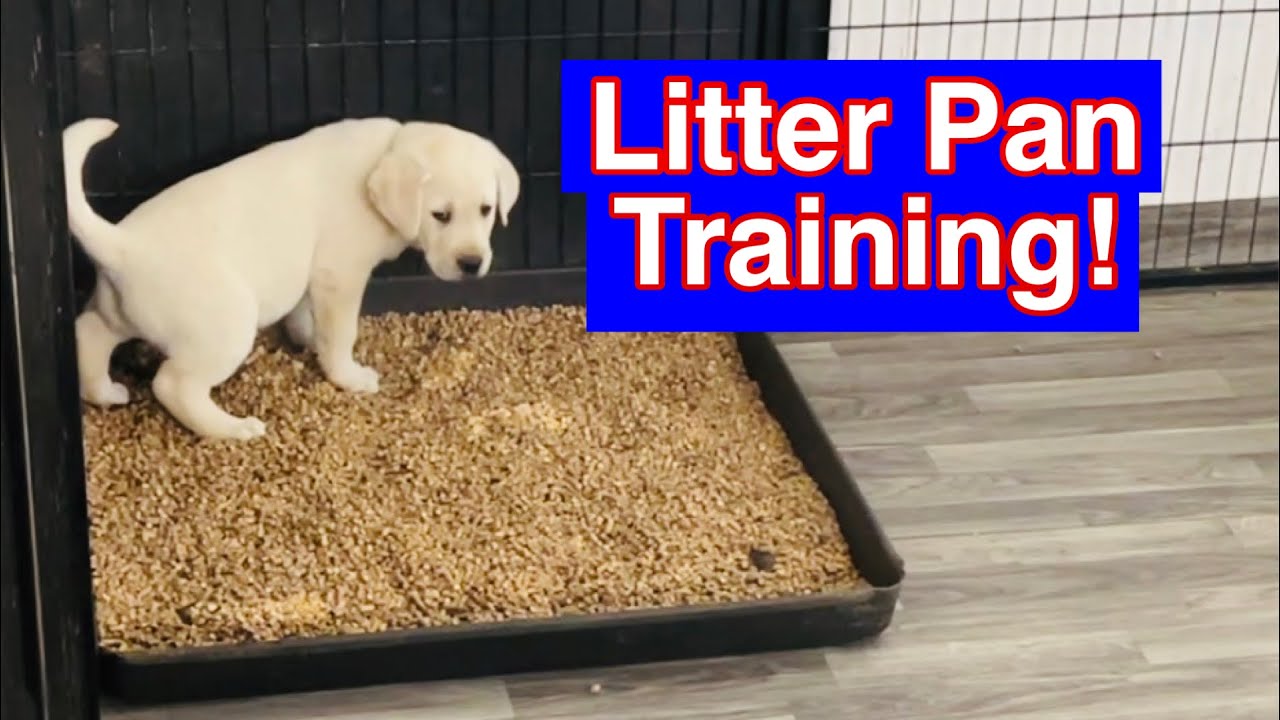
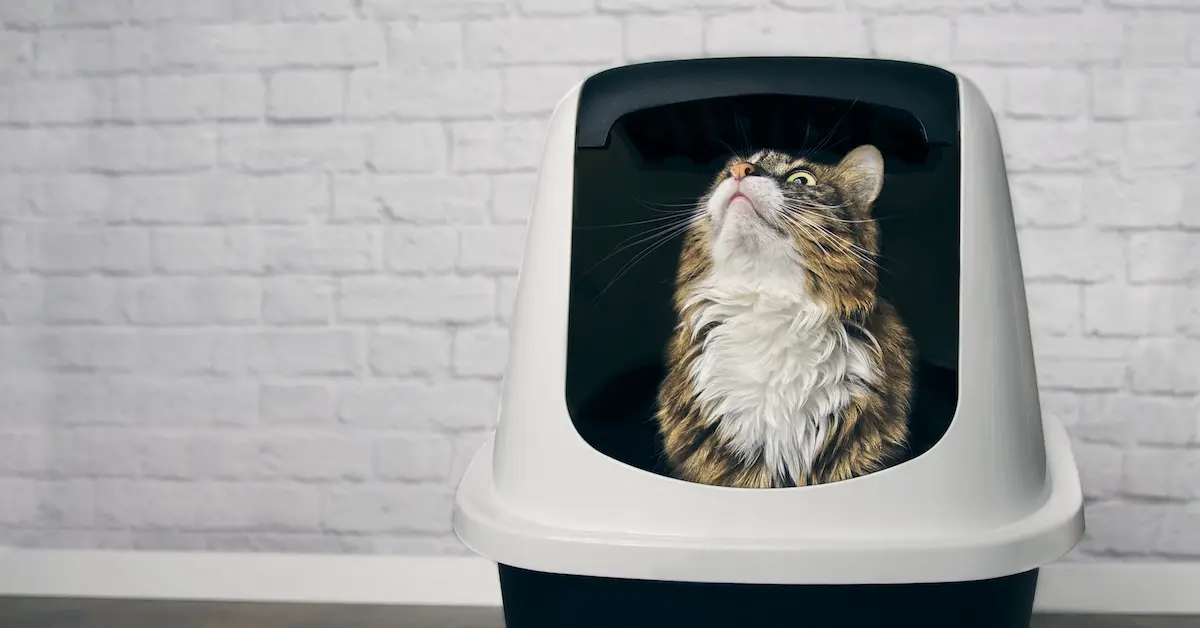
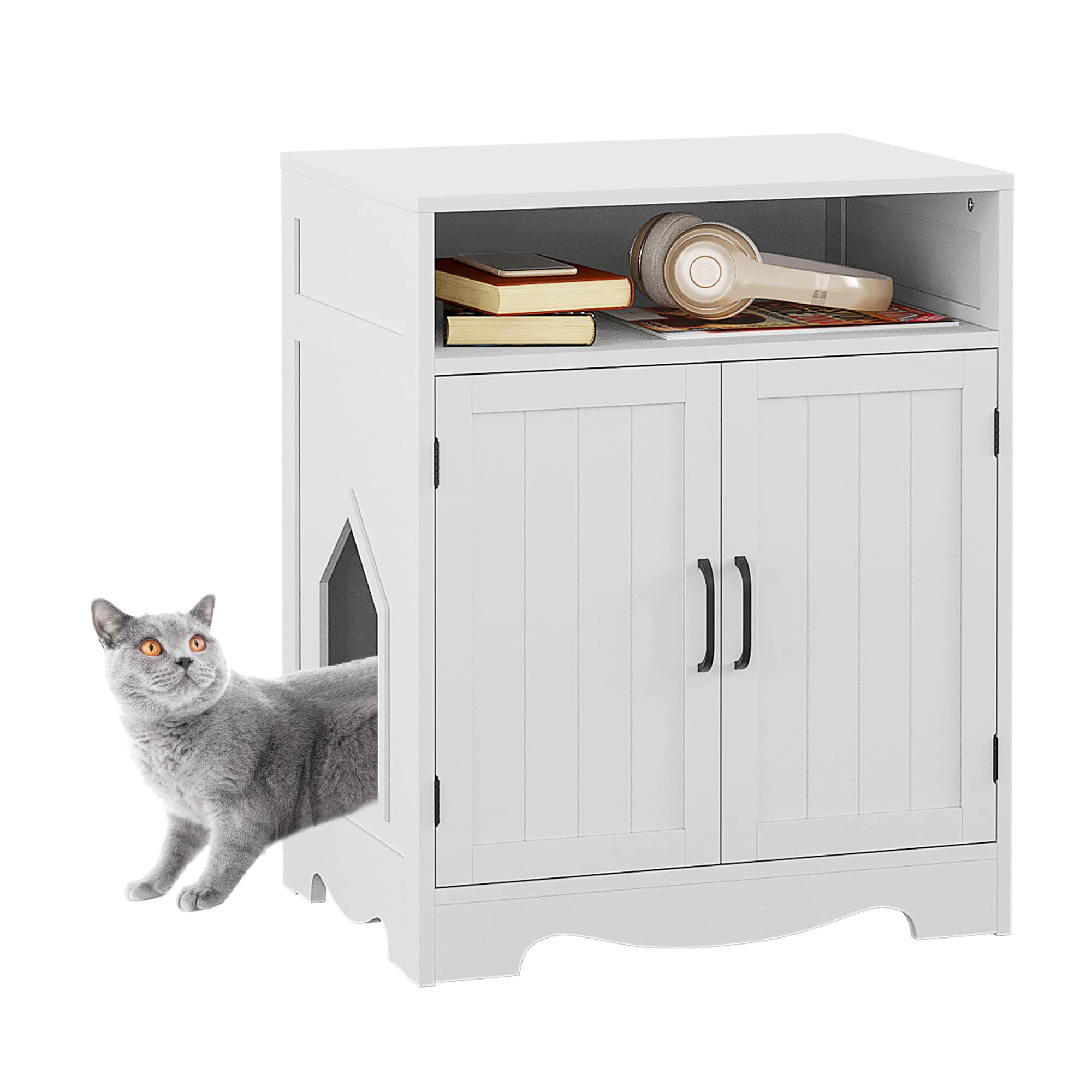
One Response